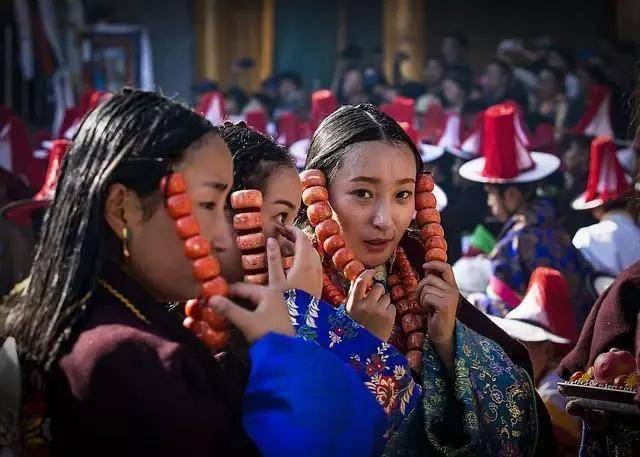The Shaman Festival in Rebkong (also known as Tongren, located in Qinghai Province, China) is a traditional celebration that holds deep cultural and spiritual significance for the local Tibetan and Mongolian communities. Rebkong, renowned for its Tibetan Buddhist monasteries and thangka painting traditions, also has a strong connection to ancient shamanic practices. The festival celebrates the enduring presence of shamanism, which predates Buddhism in the region, and is still actively practiced, particularly among the nomadic Tibetan and Mongolian populations.
Join your neighbors for an eco-friendly social gathering as the day comes to a conclusion. Savor refreshments made with sustainable ingredients and have discussions on sustainable life. By fostering a sense of community.
Michel ClarckKey Aspects of the Shaman Festival in Rebkong:
Historical and Cultural Significance:
Shamanism has a long history in Tibet and the surrounding regions, including Rebkong. Before the spread of Buddhism, shamanism was the dominant spiritual tradition in these areas, centered on the veneration of nature spirits and ancestors, as well as the belief in spiritual healers, or shamans.
The Rebkong Shaman Festival, which takes place annually, is one of the last major public expressions of these ancient spiritual traditions, bringing together shamanic practitioners, monks, and local villagers. Although Tibetan Buddhism is now the dominant religious tradition in Rebkong, the two spiritual practices have coexisted for centuries, with shamanic rites often blending elements of Buddhism. The festival serves to reinforce a connection between the natural world, local deities, and the people, ensuring harmony between the environment and the community.The Role of Shamans:
In Rebkong, shamans, also known as “lha pa” in Tibetan, are believed to be intermediaries between the human world and the spirit world. They perform important roles, including communicating with deities, offering spiritual guidance, healing illness, and protecting their communities from evil spirits.
During the Shaman Festival, shamans enter a state of trance or possession by invoking spirits or local deities. This trance state allows the shamans to channel spiritual forces and offer blessings or healing to participants.
These shamans are often from hereditary lineages, where the skills and knowledge of shamanic practices are passed down through generations. Some shamans are believed to be “chosen” by the spirits, receiving their calling through dreams, visions, or unusual events in their lives.Rituals and Practices:
The Shaman Festival features a variety of rituals, many of which involve dance, music, and offerings. Shamans, dressed in elaborate, traditional costumes often adorned with feathers, mirrors, and amulets, perform ceremonial dances and chants to call upon the spirits.
A central part of the ritual is the shaman’s dance (often accompanied by drum beats) that takes place around an altar or fire. This dance is believed to appease the spirits and bring protection and blessings to the community.
The festival also includes animal sacrifices, particularly the offering of sheep, which is a practice intended to honor the spirits and ensure the well-being of the local population. Although these offerings are sometimes controversial from a modern perspective, they are viewed within the community as an essential means of maintaining spiritual balance.
Another key ritual is divination, where shamans communicate messages from the spirits to the community. People often seek out shamans to gain insights about their personal lives, health, or future events.Healing Ceremonies:
One of the main functions of the shamans at the festival is to perform healing rituals for individuals suffering from illness, bad luck, or spiritual disturbances. The shamans use various techniques to diagnose and heal, including chanting, drum beating, and calling upon spiritual powers.
The trance state that shamans enter during the festival is believed to allow them to diagnose the cause of illness, which may be attributed to spirits or negative energies. Through ritualistic chants, offerings, and physical gestures, shamans help to expel these negative influences, bringing relief to the afflicted.Connection to Nature:
Rebkong’s Shaman Festival is deeply rooted in the worship of nature spirits and the recognition of the interconnectedness between humans, nature, and the spirit world. The festival’s location, set against the backdrop of the stunning Amnye Machen mountains, reflects this close bond with the natural environment.
Many rituals are performed to honor the local mountain deities, rivers, and other natural elements, believed to be imbued with spiritual energy. For the local nomadic herders, who depend on the land for their livelihood, these rites are an important way to ensure favorable weather and the protection of their livestock.Coexistence with Tibetan Buddhism:
While Tibetan Buddhism is the predominant religious tradition in the region, shamanic practices persist and coexist with Buddhist beliefs. It is common for shamans and monks to work together during the festival, with Buddhist monks often offering prayers and blessings alongside the shamanic rituals.
Some shamans are also practicing Buddhists, and their rituals may incorporate Buddhist elements, such as prayers to Buddhist deities or the recitation of mantras. This blending of traditions reflects the unique spiritual landscape of Rebkong, where both ancient shamanic traditions and Tibetan Buddhism contribute to the cultural and religious identity of the community.Modern-Day Significance:
In modern times, the Rebkong Shaman Festival serves as an important expression of local identity, especially for the nomadic and rural Tibetan and Mongolian communities. It has also become a way of preserving ancient spiritual traditions that might otherwise be at risk of fading in the face of modernization and political changes in Tibet and Qinghai.
The festival is also a tourist attraction, drawing visitors interested in Tibetan culture, spirituality, and shamanic practices. This has led to an increased awareness of these ancient traditions, although it has also raised concerns about the commercialization of spiritual practices.The Shaman Festival in Rebkong is a unique and powerful event that preserves ancient Tibetan and Mongolian shamanic traditions. It highlights the region’s deep connection to nature, spirituality, and the practice of healing through ritual and trance. For the local people, the festival is a time to honor their ancestors, invoke protective deities, and seek blessings for health, prosperity, and harmony. While Tibetan Buddhism plays a central role in the religious life of Rebkong, the Shaman Festival demonstrates the enduring significance of shamanic practices in the cultural and spiritual identity of the community.
Name of Village
Date
Lunar GregorianMain Activities of Shaman Festival
Type
Sakyil
16th – 19th June
18th
Togya
17th – 24th June
24th
Nyantok
19th – 25th June
24th
Jyakar
20th -25th June
21st
Kartse
20th – 24th June
23rd
Gomar
19th – 24th June
23rd
Kasar
19th – 24th June
24th
Sangeshong
19th – 25th June
24th
Lingya
20th – 24th June
22nd
Tewo
20th -25th June
23rd
Gyacangma
20th -25th June
21st
Sokru
21st – 25th June
25th
Horgya
21st – 25th June
22nd
Malpa Riza
21st – 24th June
23rd
Malp Lawang
22nd – 25th June
24th
Malpa Jam
22nd – 25th June
24th
Malpa Hara Padi
18th – 23rd June
21st
Malpa Dongam
22nd – 25th June
25th
Rebsa
21st – 23rdJune
21st
Lhade
25th June
25th
Jangkya
17th – 19th June
19th
Jangchub
23rd – 25th June
25th
Wipa
23rd – 25th June
25th

















Tourm
July 9, 2024 - 9:46 amCredibly pontificate transparent quality vectors with quality mindshare. Efficiently architect worldwide strategic theme areas after user.
Tourm
July 9, 2024 - 9:46 amIt is different from airport transfer or port transfer, which are services that pick you up s after user